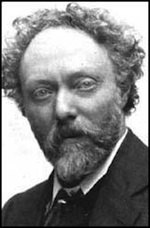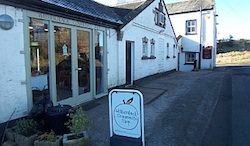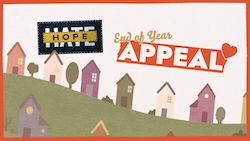PAUL SALVESON argues that today’s open garden schemes put into practice theories of village socialism advanced by some prominent members of the early ILP.
What is ‘socialism’? For the last 50 years, the assumption has been – from both enemies and advocates – that it is ‘state ownership’. Early ILP pioneers such as Keir Hardie, John Bruce Glasier, his life partner Katherine, and Allen Clarke would have begged to differ.
John Bruce Glasier (left), in The Meaning of Socialism, argued for a socialism that was based on community and co-operation – beginning with the family and working its way through forms of local co-operation. Municipal ownership was a form of local socialism and national state ownership was but a means to and end. He said: “Socialism means not only the socialisation of wealth, but of our lives, our hearts – ourselves.” (p. 226)
In Glasier’s book there is a chapter on ‘The Revival of Village Life’ which talks of the decline of communal village life and the loss of old wisdom and ways of life – celebrated by Allen Clarke in Windmill Land (see below). Part of Glasier’s argument for socialism is that it will revive a sense of community and fellowship which once existed in our villages and towns. Like his successor Colin Ward, he would have welcomed forms of community self-organisation, including allotments, community festivals and – I would argue – village ‘open gardens’ schemes.
We visited one – the bi-annual Levens Village Open Gardens Day. There were nearly 20 gardens open to the public, many offering teas, cakes and home-made produce. One went even better and had a live steam garden railway. All the proceeds went to local charities.
Grass-roots endeavour
So why was it ‘village socialism’ in practice? I’d say it was about real grass-roots community endeavour which Glasier would have applauded. The gardens were privately owned but the community combined to put on a village event which raised money for community projects. And it was fun. Nobody gained anything financially, and the idea that anyone might would be regarded as odd. It wasn’t about that.
Cynics could say that this is an affluent village and people could easily afford to do this sort of thing once every so often, but that misses the point. Village garden open days point towards a collective, local way of organising things. It isn’t so different from station adoption schemes where communities get together to develop their local station as the heart of small communities (for example, in Dalton and Green Road). It can, and does, work in more urban environments.
Another example of ‘village socialism’ is village shops like that at Witherslack (left). It is owned and run by the local community and all the staff (I think) are volunteers. It wouldn’t work as a private commercial concern but it provides a vital facility for the community and an outlet for local produce. Glasier would have recognised its value.
So too would David Lawton, author of Village Co-operation: a Jubilee Sketch of Greenfield Co-operative Society, 1856-1906 (published in 1906). Greenfield is a semi-rural community between Oldham and Huddersfield which once had a flourishing co-operative society. Like many other local societies, Greenfield was much more than ‘just’ a village store. The co-op built good quality workers’ houses, ran educational classes, and had a flourishing ‘penny bank’.
As Lawton wrote in his foreword, “co-operation is a unifying force in a community. Under its beneficent sway all the usual dividing lines of creed and party seem to disappear…”
How strange that the amazing potential of co-operation continues to be overlooked far too often by the main political parties.
—-
Paul Salveson’s profile of Katherine Bruce Glasier can be found here.
Martin Haddow’s appreciation of John Bruce Glasier is here.


